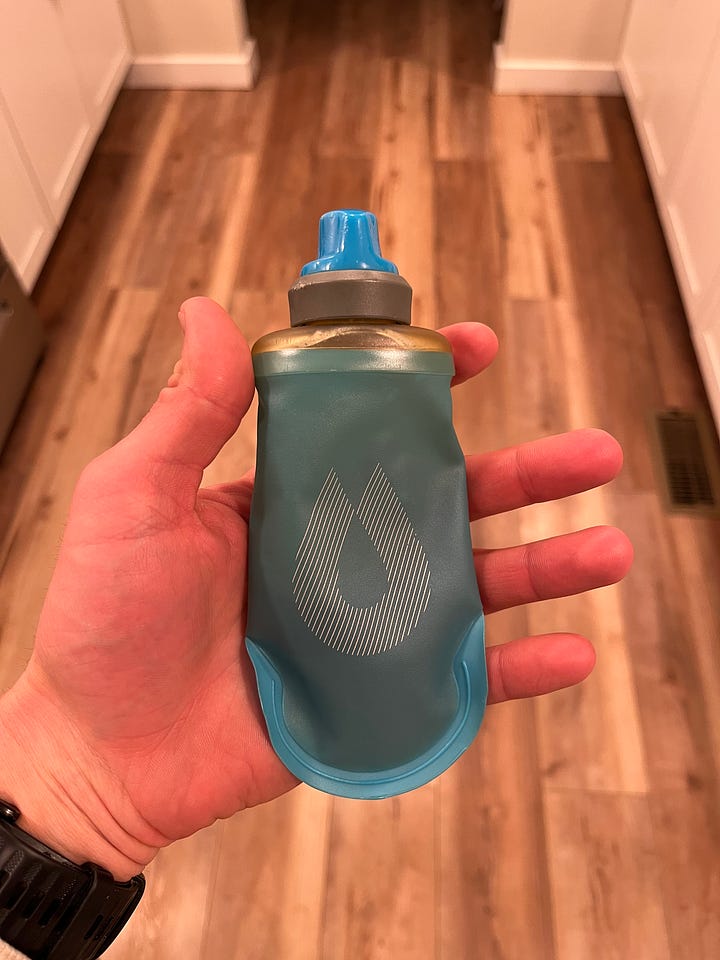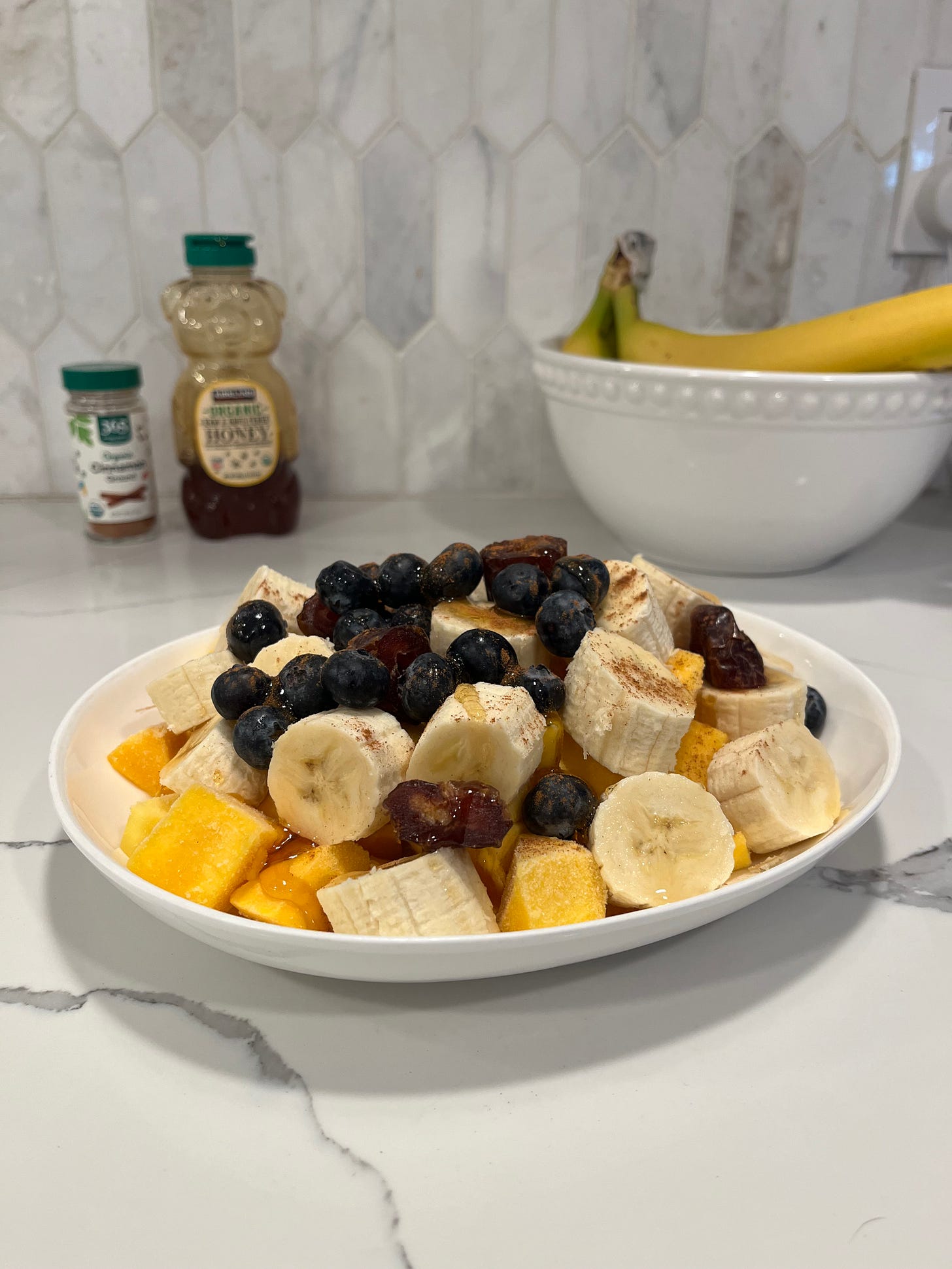Real Food Fueling For Endurance Training
Sources, science and my protocol in 50 mile ultra prep
I’ve gotten a bunch of questions this week on real food fueling for endurance training.
Which is not uncommon this time of the year…
I’ve observed that in the winter months/post holidays, it’s common for athletes to want to…
lose weight/adjust body composition
back off the sports mixes (after drinking so much sugar during Ironman/70.3 training)
And with the new Fruit Till Noon Diet Experiment going down inside Tribal, I’ve been asked for tips.
Here’s my strategy, implementation and some science to support it:
(You can read more on the Fruit Till Noon experiment below)
1. Real Food Super Fuel
Honey and Maple Syrup are the two best options for real food fueling.
quick energy
easy to digest
natural electrolytes/micronutrients
calorie dense, easy to ration and carry
These 5 oz soft flasks are great for transporting. They hold ~500 calories of either.


2. My Real Food Fueling Protocol
I'm currently training for Elephant Mountain 50 Mile Ultra and doing a "lower-carb" fueling approach in training (~100 to 150 cals/hour).
I bring a 5 oz soft flask on 2-3 hour runs/rides and take in a squirt every 20 mins or so.
For hydration and more electrolytes, I put Himalayan Pink Salt in my water bottles.
This is the best set up for Real Food Fueling.
clean ingredients
carbs, water, salt (what the body uses)
can ration and still utilize fat burning in training
I especially like using honey and maple syrup in the winter months.
They're cool and crisp to taste (not as tasty when they warm up in the summer heat).
I feel fueled and accomplished in training, then come home and destroy a monster fruit bowl.
It’s a simple life. But it’s a good life.
3. Sports Science
There’s one key difference between Honey and Maple Syrup: The type of sugar
Honey is mostly fructose
Maple Syrup is mostly sucrose
What’s that mean?
Fructose provides a slower energy release than Sucrose. It’s absorbed in the small intestine, then metabolized in the liver.
As a result, Honey has been shown to maintain steadier blood glucose levels during prolonged exercise.1
Sucrose is made up of one Glucose molecule and one Fructose molecule.
The Glucose provides an immediate source of energy, while the Fructose follows the slightly slower absorption and metabolism pathways mentioned above.
The combo of fast and slow burning sugar sources have resulted in Maple Syrup lowering Rate of Perceived Exertion in prolonged exercise compared to placebo.2
Give one of these a try in your next session and hit me back with how it works for you.
Thanks for reading,
Ryan
https://pmc.ncbi.nlm.nih.gov/articles/PMC6683082/?utm_source=chatgpt.com
https://pmc.ncbi.nlm.nih.gov/articles/PMC7724719/?utm_source=chatgpt.com






What are your thoughts on sweet potatoes as fuel? I’ve been using them on long bike rides (baked and mixed with salt) and have had pretty good results. I think they’re probably in the slow release category